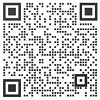
get in touch with us


Mesotech scanning sonar was first used in the installation of a remote stabilization mattressin the Strait of Georgia in water depths up to 90m (295 ‘) (1990). This image shows the position of the pipeline and the stabilization mattress hoisted from the barge in the custom frame. During installation, the crane operator, using sonar and an image from a frame-mounted camera, was commanded to move the boom/mattressto its position on the line, then activate the hydraulic release mechanism for the remote blanket. In this project, the navigation receiver on top of the boom provided the X,Y geographic coordinates of the blanket.

Sonar Configuration for ROVs
Mesotech was asked to provide an acoustic solution for placing the mattress due to the known limited underwater visibility in the area where the blankets were deployed. The solution consisted of the usage of two work-class ROVs to complete the installation. The main ROV was equipped with a single-beam high-resolution imaging sonar and two profiler probes; the second ROV was equipped with a single-beam profiler probe. Although the second ROV was fitted with an MS 1000 imaging sonar, which it was not used in the mattress installation.
Two MS 1000 images showing the process of laying a Submar® stabilization mattress on a pipeline at a depth of 350m (1148′) in the Gulf of Mexico. In less than 1m (3.2′) visibility, scanning sonar was used to place the blanket, confirm its position and record its orientation on the line.
Sonar Configuration for Installing Stabilization Mattress

– Deployment of 2 work-class ROVs
– 2 PCs loaded with MS1000 sonar software processor
-2 MS1000 interface units
– 675kHz high-resolution scanning sonar head with sector transducer (or multi-frequency high-resolution sonar head)
-3 MS1000 series, 1171 multi-frequency profilers
-Acoustic tracking system
Deployment of stabilization mattress with dual ROVs

Two ROVs followed the stabilization mattress and deployment frame to the seabed. As the mattress neared the bottom, the ROV 1 used its robotic arm to grip one end of the mattress and dissected the ocean floor with sonar with red and blue coverage marks. The red coverage of sonar image was used to locate the ROV directly above the pipe. The image from the blue coverage was used to position the ROV on the edge of the previously placed blanket.
When ROV 1 was in place, ROV 2 would use a robotic arm to grip the other end of the pad and covered it with its red unit to position it directly over the pipeline. Then, to lower the mattress to the bottom and release. Once the mattress was deployed, the imaging sonar on ROV 1 (showing gray coverage) would be used to record the orientation of the blanket.

Shallow water remote deployment and backfilling
Use the deployment controls to prevent the sonar head from turning when the crane barge is lowered. This method requires only one imaging scanning sonar. Lower the sonar head close to the seabed and oversee the custom-designed mattress frame into the sonar image. The geographic location of the mattress is determined by attaching a gimbal GPS receiver to the end of the boom; the GPS position is recorded as the mattress is lowered onto the pipe.
Address:Room 413, Building B, No.50, Lane 2700, Lianhua South Road, Minhang District, Shanghai
Tel:+86 021-64050257
Email:mail@seawardtech.com.cn
